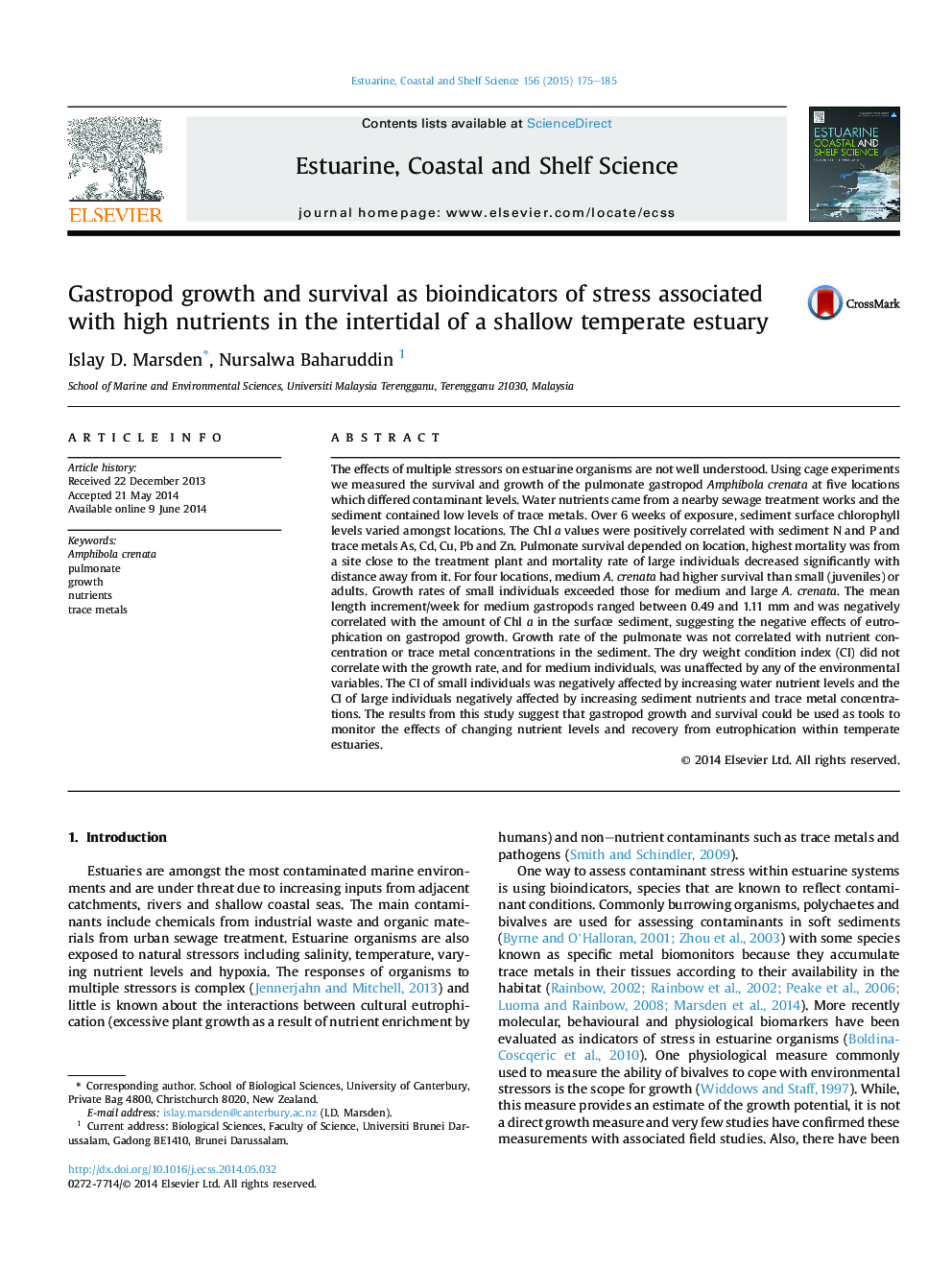| Article ID | Journal | Published Year | Pages | File Type |
|---|---|---|---|---|
| 4539579 | Estuarine, Coastal and Shelf Science | 2015 | 11 Pages |
•We measured the responses of an estuarine gastropod to aquatic nutrients sediment nutrients and trace elements.•A field cage experiment was undertaken at 5 locations in a small estuary.•Mortality of large Amphibola crenata decreased away from the discharge point.•Length increment/week for medium snails was negatively correlated with Chl a on the surface sediment.•Pulmonate growth and survivorship are useful bioindicators of eutrophication.
The effects of multiple stressors on estuarine organisms are not well understood. Using cage experiments we measured the survival and growth of the pulmonate gastropod Amphibola crenata at five locations which differed contaminant levels. Water nutrients came from a nearby sewage treatment works and the sediment contained low levels of trace metals. Over 6 weeks of exposure, sediment surface chlorophyll levels varied amongst locations. The Chl a values were positively correlated with sediment N and P and trace metals As, Cd, Cu, Pb and Zn. Pulmonate survival depended on location, highest mortality was from a site close to the treatment plant and mortality rate of large individuals decreased significantly with distance away from it. For four locations, medium A. crenata had higher survival than small (juveniles) or adults. Growth rates of small individuals exceeded those for medium and large A. crenata. The mean length increment/week for medium gastropods ranged between 0.49 and 1.11 mm and was negatively correlated with the amount of Chl a in the surface sediment, suggesting the negative effects of eutrophication on gastropod growth. Growth rate of the pulmonate was not correlated with nutrient concentration or trace metal concentrations in the sediment. The dry weight condition index (CI) did not correlate with the growth rate, and for medium individuals, was unaffected by any of the environmental variables. The CI of small individuals was negatively affected by increasing water nutrient levels and the CI of large individuals negatively affected by increasing sediment nutrients and trace metal concentrations. The results from this study suggest that gastropod growth and survival could be used as tools to monitor the effects of changing nutrient levels and recovery from eutrophication within temperate estuaries.
